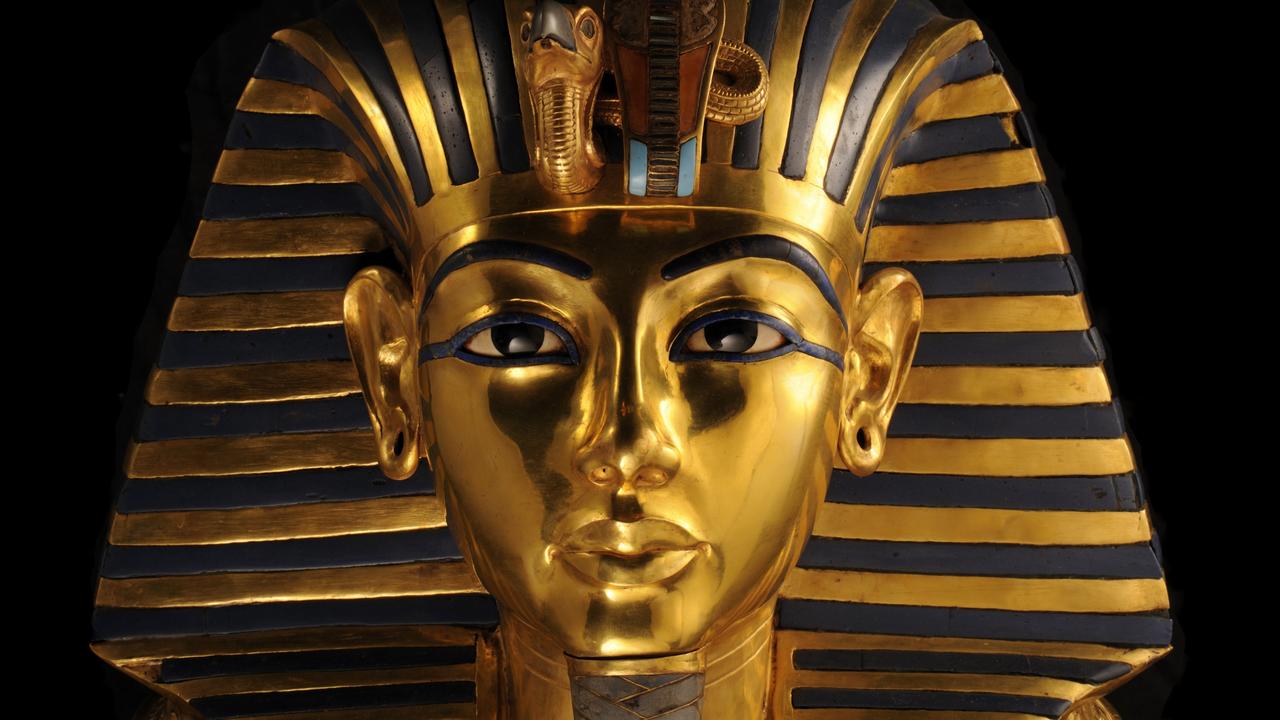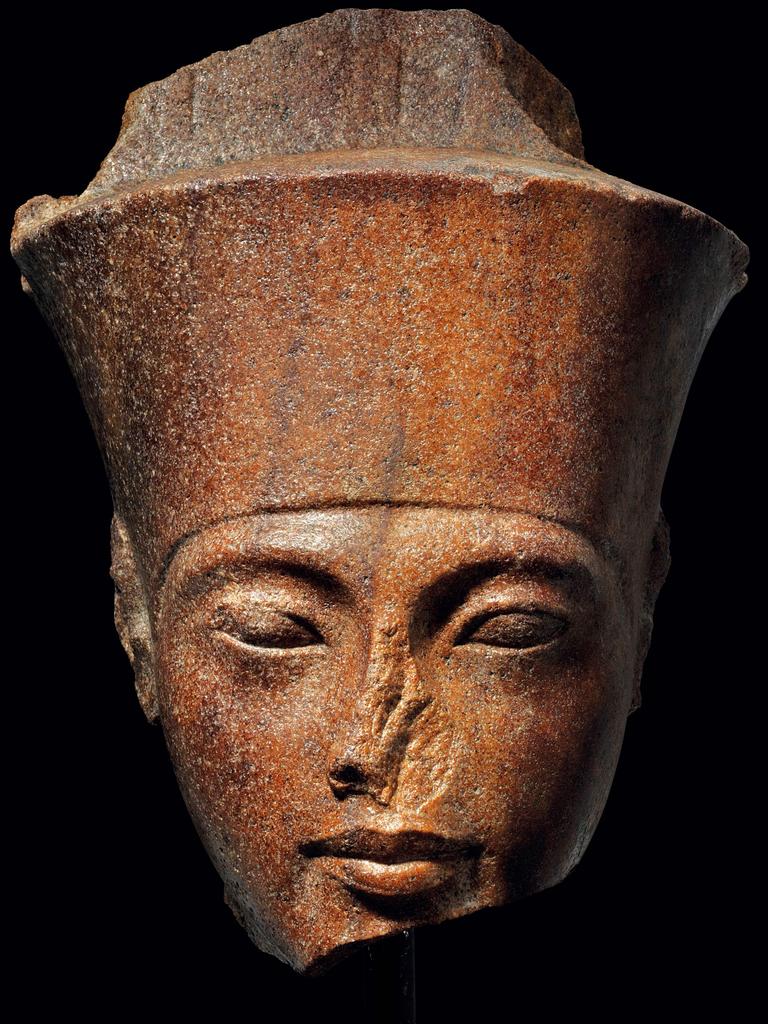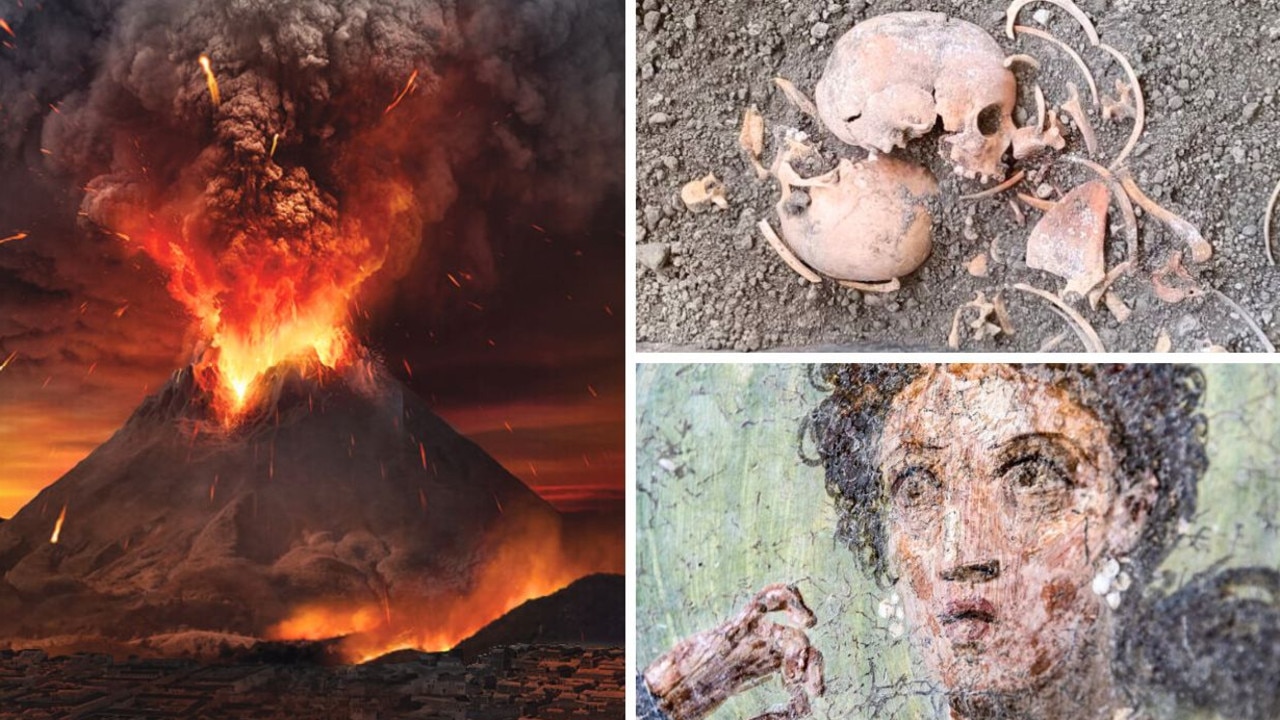‘Dead giveaway’: New evidence sparks huge King Tut mystery
New evidence uncovered by archaeologists threatens to upturn everything we think we know about the famous boy-king Tutankhamun.
Archaeology
Don't miss out on the headlines from Archaeology. Followed categories will be added to My News.
Was Pharaoh Tutankhamun a “cast-off king”? Evidence shows that his shimmering golden death mask was made for someone else.
The boy-king Tutankhamun is a relatively insignificant Pharaoh in Egypt’s 3000-year history.
But he’s the most famous because his largely unlooted tomb revealed its wealth of golden artworks to a stunned world in 1922.
Most famous among them all was his extraordinary death mask.
“The penultimate scene was disclosed,” archaeologist Howard Carter wrote in his diary after opening the final layer of the nesting doll-like sarcophagi.
“A very neatly wrapped mummy of the young king, with a golden mask of sad but tranquil expression … the mask bears God’s attributes, but the likeness is that of Tut. Ankh. Amen — placid and beautiful, with the same features as we find upon his statues and coffins.”
It’s 53.5cm tall and made from 10kg of solid gold inlaid with obsidian and quartz. The intense blue lapis lazuli of the headdress has been traced to some of the oldest known mines in the world – in Afghanistan.
Its pristine sheen, intricate detail and lifelike features have fascinated millions of tourists ever since.
But it’s probably not his.

Archaeologists have been scratching their heads about several irreconcilable details of the mask and many precious objects intended to ease the boy-king’s afterlife.
His tomb isn’t right. Its design is reserved for queens, not kings.
Some of his statues have breasts.
Many items carry the name of his heretic stepmother, Nefertiti.
Such anomalies in what would normally be a strictly formulaic and traditional funerary process have prompted University of York researchers to reassess his glittering legacy.
Inconvenient truths
Archaeologist Howard Carter’s discovery overwhelmed the archaeological world with its golden treasures. But Tutankhamun’s tomb also preserved a valuable insight into the royal family’s daily lives – with everything from tents to chariots, combs to cutlery and thrones to sceptres found among the stacked funerary offerings.
A century later, researchers have had a chance to step back and look at the bigger picture.
One of them is Professor Joann Fletcher of Britain’s University of York.
The Egyptologist led a team in 2003 to identify a badly damaged mummy as likely belonging to Queen Nefertiti – co-ruler of Egypt under the reign of the monotheistic heretic Pharaoh Akhenaten.


She’s now added her expert eye to those taking a new look at Tut’s mask.
“This mask was not made for an adult male pharaoh,” Fletcher concludes.
The circumstantial evidence is strong.
“When the gold was compared, the face is made of completely different gold to the rest,” Fletcher highlights.
“(And) evidence of soldering is clearly visible on the mask.
“It now seems as if Tutankhamun’s own face was effectively grafted onto the mask of the previous ruler … It may well have been [Queen] Nefertiti.”
But she says the earring holes are a dead giveaway.
Ancient Egyptian culture was built around religious symbology. This was to clearly broadcast an individual’s status and rank.
And 3000 years of history demonstrate earrings were reserved for women and children of noble birth.
Fletcher argues their presence is inappropriate for a mature-age king.
“I was sure the death mask was not specifically designed for King Tut,” says Fletcher.
It’s not the first time this has been suggested.
British Egyptologist Nicholas Reeves released his analysis of the death mask in 2015.
He points to Tutankhamun’s cartouche stamped on the mask’s interior. It appears to overlay an older cartouche with alignments matching Nefertiti’s name.

Hand-me-down king
King Tut was only nine when he took the throne.
It was a tumultuous time.
His father, Akhenaten, had died. While the murderous machinations of the years immediately following are unclear, we know the heretic pharaoh’s sun-god religion was overthrown by priests of the traditional gods based in Thebes.
For Tut, this involved a name change.
Tutankhaten (Living Image of the God Aten) became Tutankhamun (Living Image of the God Amun).
His wife (and half-sister) Queen Ankhesenamun changed her name from Ankhesenaten (She Lives for the God Aten).
Tut was young when he died. Most estimates put him at about 19.
His cause of death in 1323 BC is uncertain. But evidence suggests he may have been run over in a chariot accident.
His youth and the cultural upheaval surrounding a change in state religions may have thrown his burial preparations into disarray. But there are also suggestions his successor, Pharaoh Aye, may have appropriated a royal tomb intended for the boy-king for himself.

Speculation has surged in recent years that Tut was moved into the tomb of his stepmother.
Queen Nefertiti’s story is a mystery.
Her husband broke with tradition by appointing her co-ruler. And she played a central role in promoting the worship of the Aten.
Some suggest she attempted to rule under a new name after Akhenaten’s death. But this hypothesis remains controversial.
What is likely is that Egypt’s priests and funerary officials were forced to rush Tut’s burial.
At best, the mask was made for the boy-king while he was still an earring-adorned child.
At worst, it represents a desire to destroy Akhenaten and Nefertiti’s legacy.
Their riches could be rebadged and repurposed for Tutankhaten. And the sun would set on the worship of the Aten with the closure of the boy-king’s tomb.
Jamie Seidel is a freelance writer | @JamieSeidel
Originally published as ‘Dead giveaway’: New evidence sparks huge King Tut mystery









